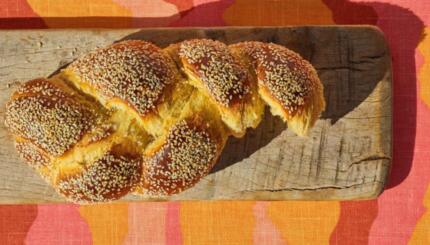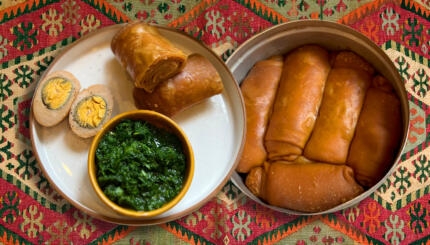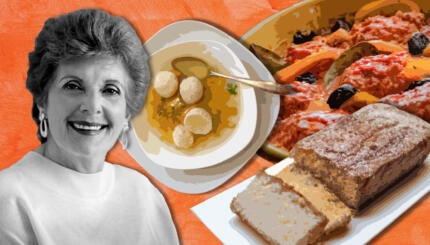Sukkot is a holiday of joy and welcome. The custom of inviting spiritual ushpizin, which means “guests” in Aramaic, into the sukkah is a way of extending that welcome and joy to those who cannot physically be with us but whose spirit and values represent that which we would like to bring into our celebration. The custom of ushpizin also allows us to enter into conversation with our past and engage in the present in a discussion about who we are and what we value.
Be’chol Lashon asked seven American Jews to share who they would invite into their sukkah. Their answers speak to the ways in which Jews look both to the past for personal and communal connection and to the present for ongoing inspiration.
Rabbi Juan Mejía
Rabbi Juan Mejía (Be’chol Lashon)
I would invite Rabbi Menashe ben Israel, who born in 1604 in Portugal. When he was six years old, he and his family moved to Amsterdam and reverted to Judaism. In his lifetime he became one of the most important rabbis in Amsterdam. He wrote original works of Torah commentary. He translated many important works into Spanish and Portuguese so that people returning to Judaism could reconnect with their past and find their way. He was Baruch Spinoza’s teacher. He was a friend of the artist Rembrandt and many others in the Dutch Enlightenment crowd who viewed him as an equal in science and mathematics.
Towards the end of his life, he did a lot to get the Jews readmitted to England. The Jews had been expelled from England in 1290, and he appealed to Oliver Cromwell, who was the Lord and Protector of the Commonwealth, and this not only eventually led to the readmission but also set the precedent for allowing Jews to remain in New Amsterdam. In other words, he set the stage for an Anglo-American Jewish community.]
The reason I am inspired by him is that he is someone who came from the periphery of the Jewish world and became an important part of the Jewish core in the most exciting part of the Jewish world at the time. But he did not just care for the core. Throughout his life, he reached out to those on the periphery and worked to help them connect with Judaism.
Rabbi Juan Mejía is the Southwest/Latin America director at Be’chol Lashon. He was born in Bogotá, Colombia in 1977. When he was 15, he discovered his converso roots, which led him on a Jewish journey and eventually to the Conservative rabbinate. He lives in Oklahoma City and teaches about Judaism to Spanish-speaking Jews around the world.
Sarah Aroeste
Sarah Aroeste (Courtesy)
Dona Gracia Naci is one of the most under-appreciated Jewish women in history, in my opinion. Born in Portugal in 1510 into a converso family, one that secretly kept their Jewish faith even though they converted to Catholicism under duress, Dona Gracia spent all of her adult life using her fame and massive fortune to save other Jews trying to escape the Inquisition’s wrath.
Through an underground network of financial and political ties, she helped transfer hundreds of Jews to safety in the Ottoman Empire. In doing so, she helped save Sephardic Jews and the culture that still survives up to now. She risked her life numerous times (and was even jailed!), she spent her money charitably (building synagogues and schools for her compatriots), and invested in books (she’s partly responsible for the famous Ferrara Bible in Judeo-Spanish). In short, Dona Gracia understood what was at stake if our language and customs were to be forgotten. What I would give to invite her into my sukkah to say thank you for everything she did to keep Sephardic life alive today!
Sarah Aroeste is an international Ladino singer/songwriter, author and cultural activist. Drawing upon her Sephardic family roots from Greece and Macedonia (via Medieval Spain), Aroeste is determined to help bring Judeo-Spanish culture to a new generation.
Yanira Quinones
Yania Quinones (Courtesy)
If I could invite anyone into my sukkah, I would want to invite Astruc Laó. Who is Asturc Laó? Asturc Laó was recorded as living in Valls, Spain during the 14th century as a Jew. He might be related to me, on my maternal great-grandmother’s side of the family. I have been chasing the name Laó since I made the connection while putting together my family tree.
I’ve always held much curiosity around how my family gained access to Puerto Rico. Why did they leave Spain? Were they running away from something? Or were they running towards something? I grew up going to church always feeling like I was missing something. The most interesting part about my feeling for Judaism is that my mother also felt like she was missing something. I would constantly ask her as a young child about why we don’t read Hebrew and why we do not observe traditional holidays.
It wasn’t until my adulthood when I began living an authentic Jewish life that I started to feel wholeness. The surname Laó is an uncommon name in Puerto Rico; that is why it has been calling me. I would love to ask Asturc about life in Spain as a Jew during this time period and if we are related. It could clarify so many questions.
Typical of many Hispanic Jews who have returned to Judaism, Yanira Quinones heard stories of certain “practices” performed by some older members of her family that resembled Jewish ritual, such as her grandmother always using “special” dishes on Friday nights. She has traced her family to 18th century Ponce, Puerto Rico.
Dr. Helen Kim
Dr. Helen Kim (Courtesy)
The two individuals I would invite are my deceased father, John Young Chang Kim, and my husband’s deceased father, Richard Marshall Leavitt. I never had the chance to meet Noah’s father. However, everything that I know and have heard about him demonstrates that he especially embodied emunah, chesed, kehillah, and sever panim yafot—faith, generosity and kindness. My father, who passed when I was eighteen, especially embodied emunah, kavod, achrayut, chesed, and sever panim yafot—faith, respect, responsibility, generosity and kindness. It would be really cool to have my dad and Noah’s dad in a sukkah together!
Dr. Helen Kim is a professor of sociology at Whitman College. Her scholarship focuses on race and American Judaism in the contemporary era. She is the author of JewAsian: Race, Religion, and Identity for America’s Newest Jews.
Marcella White Campbell
Marcella White Campbell (Be’chol Lashon)
Sometime before 1800, an African woman set foot on the shores of the United States and was sold into slavery in North Carolina, as far from the place of her birth as if she had landed on the moon. I don’t even know her name; all I know is that she lived long enough to give birth to my 5th great-grandfather. But I can say with certainty that she never saw her home again.
At Sukkot, we give thanks for harvest and abundance, but we also commemorate the wanderings of the Jewish people, in the harsh desert after Sinai and in the dangerous diaspora since, ever in search of the safety and security of home. We remember that Jews lived in booths to protect them from the elements. We remember that you can live in a dwelling and still be homeless. I would invite my “foremother” into the sukkah to share her story of living in a strange and hostile land while longing for home.
Marcella White Campbell is the marketing director at Be’chol Lashon.
Rabbi Sandra Lawson
Rabbi Sandra Lawson (Courtesy)
The first person that came to mind was Harriet Tubman. For me, she is the one person in our American history who truly feels like an earthly embodiment of Moses. Like the Israelites, my ancestors were born into slavery. My parents grew up in the Jim Crow South in a family of sharecroppers, working land they did not own for very little pay. American slaves who were brought to this country came from different religious backgrounds, and many of them focused on the Exodus story of freedom and redemption, seeing themselves as the Israelites, and the slave system as Egypt and the pharaoh. Harriet Tubman risked her own life, time and time again, to rescue and free American slaves. She has been called “Moses” by many.
Tubman once said that she could have freed thousands more slaves if they knew they were slaves, reminding me of the kvetching and complaining done by the Israelites in the desert. I admire Harriet Tubman not just because she escaped from slavery but because she went back countless times to save other slaves. She represents the Jewish values of chazak v’amatz (strong and courageous). May we one day possess this level of strength and courage and put our lives on the line to save those in need.
Rabbi Sandra Lawson is the associate chaplain for Jewish life and Jewish educator at Elon University Hillel.
William Whatley
William Whatley (Courtesy)
The person I would want to invite into the sukkah is Jaden Smith. At the beginning I just liked his music, but when I looked into who he is as person I was really inspired. I learned about how Smith started a program to improve the water quality in Flint, Michigan. He was using his own money to make a difference. He also has a vegan food truck that gives away food to homeless people for free.
At his concerts, Smith speaks about the causes he believes in and educates people so they know about the problems and where the money is going. He has a lot of privilege, but he uses his privilege to make a difference. That is a Jewish way of doing things: it is not about you, it is about making the world a better place.
William Whatley is a junior at Georgia State University, studying Hospitality/Hotel and Restaurant Management.



